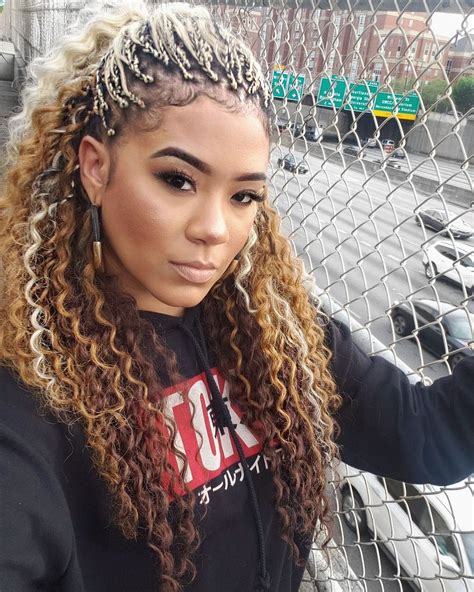Introduction

The ancient technique of tree braiding has been revitalized in recent years, showcasing the intricate beauty and versatility of human hair. This guide provides a thorough exploration into hair for tree braiding, revealing its captivating allure, versatile applications, and expert techniques.
The Allure of Hair for Tree Braiding
Tree braiding, also known as “dendrobraiding,” draws its inspiration from the intricate branches of trees. It involves braiding human hair into intricate patterns that resemble the winding paths of a tree’s branches, creating a stunning and unforgettable aesthetic. The resulting braids are both visually captivating and a testament to human creativity.
The enchanting beauty of hair for tree braiding lies in its:
- Versatile styling options: Tree braids can be styled in a multitude of ways, accommodating various preferences and facial shapes.
- Natural yet sophisticated appearance: The natural texture of human hair lends a beautiful and organic touch to tree braids, complementing any outfit.
- Symbolism and cultural significance: Tree braiding holds cultural significance in many societies, representing growth, strength, and connection to nature.
Applications of Hair for Tree Braiding
The versatility of hair for tree braiding extends beyond aesthetics, offering practical applications that cater to diverse customer needs.
Key applications include:
- Artistic expression: Tree braids serve as a canvas for expressing artistic creativity, encouraging boundless possibilities for unique and imaginative designs.
- Hair extensions: Human hair tree braids can effectively add volume and length to natural hair, enhancing its beauty and providing styling flexibility.
- Dreadlock artistry: Tree braiding can be incorporated into dreadlock styles, adding intricate patterns and enhancing their visual appeal.
- Ceremonial adornment: Tree braids hold significance in certain ceremonies and cultural events, symbolizing growth, renewal, and spiritual connections.
Expert Techniques for Hair for Tree Braiding
Mastering the art of hair for tree braiding requires precision and technique. Experienced braiders employ a range of methodologies to achieve the desired outcome.
Essential techniques include:
- Sectioning: Hair is carefully sectioned into manageable strands that guide the braiding process.
- Braiding methods: A variety of braiding techniques are employed, such as the three-strand braid, French braid, and Dutch braid, each contributing unique elements to the final design.
- Styling tools: Specialized tools, such as combs, brushes, and hair gels, aid in achieving intricate details and securing the braids in place.
Customer Pain Points and Motivations
Understanding the motivations and pain points of customers is crucial in delivering a satisfying hair for tree braiding experience. Customers seek:
- Artistic expression: Customers are motivated by a desire to express their individuality and creativity through unique hair designs.
- Natural enhancement: They yearn for hair solutions that enhance their natural beauty without compromising its integrity.
- Cultural connection: Tree braiding holds cultural significance for some customers, representing a connection to heritage and tradition.
- Pain points: Pain points include discomfort during the braiding process, hair damage from improper care, and the time-consuming nature of tree braiding.
Common Mistakes to Avoid
To ensure optimal results, it is crucial to avoid common mistakes that can compromise the integrity of hair for tree braiding:
- Over-braiding: Excessive braiding can lead to hair damage and breakage.
- Improper care: Inadequate product usage, irregular washing, and heat styling can damage the hair.
- Lack of tension: Loose braids can result in hair falling out of place.
- Choosing unskilled braiders: Selecting inexperienced braiders can lead to poor quality results and discomfort.
Tables for Reference
Table 1: Hair Preparation for Tree Braiding
| Step | Description |
|---|---|
| Cleanse | Wash hair with a gentle shampoo and conditioner |
| Detangle | Use a wide-tooth comb to remove knots |
| Section | Divide hair into manageable sections |
Table 2: Essential Braiding Techniques
| Technique | Description |
|---|---|
| Three-Strand Braid | Braid three strands of hair together |
| French Braid | Braid hair while incorporating sections from the sides |
| Dutch Braid | Similar to French braid but braids under the main section |
Table 3: Styling Products for Hair for Tree Braiding
| Product | Purpose |
|---|---|
| Hair Gel | Holds braids in place |
| Hair Oil | Moisturizes hair and adds shine |
| Hair Spray | Adds volume and hold |
Table 4: Aftercare Tips for Hair for Tree Braiding
| Tip | Description |
|---|---|
| Avoid over-washing | Wash braids twice a week using a sulfate-free shampoo |
| Use a detangling spray | Gently loosen tangles with a detangling spray |
| Apply hair oil | Apply a nourishing oil to moisturize and protect braids |
Inspiring Innovation
The realm of hair for tree braiding presents opportunities for innovation that cater to the evolving needs of customers. Consider these ideas:
- Interactive braiding software: Develop software that allows customers to design and preview tree braid styles before committing to an appointment.
- Customized hair extensions: Offer customized hair extensions specifically designed for tree braiding, enhancing accessibility and personalization.
- Smart braiding tools: Create smart braiding tools that monitor hair tension and provide feedback to ensure optimal results.
Conclusion
Hair for tree braiding empowers customers to express their individuality, enhance their natural beauty, and connect with their cultural heritage. By understanding the techniques, applications, and customer needs, hair professionals can deliver exceptional results that meet the aspirations of each client. Embrace the intricate art of hair for tree braiding and unlock a realm of possibilities that showcase the boundless beauty and versatility of human hair.
